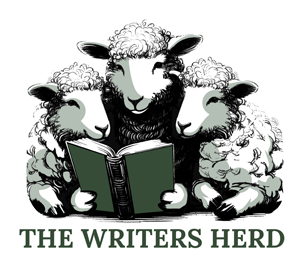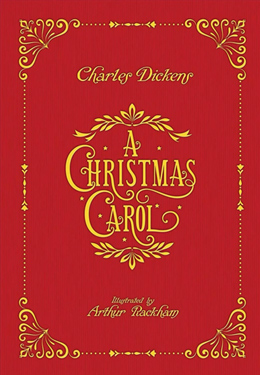‘I will live in the Past, the Present, and the Future. The Spirits of all Three shall strive within me. I will not shut out the lessons that they teach.’
A Christmas Carol is a story we all know from the many adaptations through the years. Some good, some bad, some funny, some scary. But the original book really gives this tale a richer and more layered experience, even with its surprisingly short length. It’s packed with vivid characters, important social commentary and timeless themes of redemption, family, and social justice. While this story is over 150 years old it still feels relevant to this day. Dickens’ description of a bustling yet cosy Victorian London invites you to ponder its grim realities mixed with its warm glow of Christmas spirit. The characters and setting are brought to life with rich and enchanting prose.
A Timeless Plot
The story begins by settling into a haunting tone with the death of Scrooge’s business partner, Marley. Scrooge, our protagonist is a miserable old man who sneers and sniggers at the joy and generosity many uphold at Christmas. He is a selfish man who simply doesn’t care about the suffering of others, dismissing everyone, from lonely beggars to his underpaid clerk, with a mere comment.
In this tale, Scrooge is visited on Christmas Eve by the ghost of his former business partner, Jacob Marley, who warns him that unless he changes his ways he will end up in eternal torment. With Marley departed, Scrooge’s night continues with visits from three spirits. The Ghosts of Christmas Past, Present, and Yet to Come. Each shows him his life and the lives of those around him from a different perspective. By morning the three spirits are gone and Scrooge has transformed into a man of generosity and compassion.
The Three Spirits
The three spirits each bring something different to the tale, offering Scrooge a distinct lens to look at his life and the world through.
The Ghost of Christmas Past is an ethereal figure who is described as simultaneously youthful and ancient. A figure with a true otherworldliness to them who takes Scrooge back to his youth and shows us a more vulnerable side to the man through his childhood and early adult years. We find out about his lost connection with his beloved sister and the heartbreak of losing his fiance, Belle. The Ghost of Christmas Past prompts Scrooge to look at his past and confront the choices that led him from joy and innocence to anger and bitterness.
We are then introduced to The Ghost of Christmas Present, a jolly and vibrant character that has a bit of Santa Clause about him. He embodies warmth and the generosity of the festive season, represented through his robe, laden with a Christmas feast, and his loud, booming laugh. This ghost introduces Scrooge to the joys and sorrows of those celebrating in the present. We see the Cratchit family whose joy and love shine through their meager Christmas celebrations. Tiny Tim becomes a beacon of innocence and resilience with his famous line, ‘God Bless us, every one!’ We are also shown the wider world and Scrooge pulls back the curtains on the harsh realities faced by those in poverty.
Last but not least, we meet The Ghost of Christmas Yet to Come, a being that represents possible futures through an ominous and haunting aura. This ghost is silent and cloaked in darkness, ready to show Scrooge a bleak future in which his death is mourned by no one at all. And in which Tiny Tim’s chair sits empty as the Cratchit family grieve in deep sorrow. But this future is not certain, it all hangs on whether Scrooge takes in the consequences of his greed.
The Cast of Characters
Of course Scrooge is our transforming protagonist, but it’s all the other characters in this classic that add depth and heart to the story. We have Bob Cratchit, a loving father and husband, and Scrooge’s overworked employee, who despite his hardships, embodies the true spirit of Christmas with his optimism and gratitude. The whole Cratchit family adds so much heart to this story. Especially Tiny Tim, a character who is as integral as he is small. His character really shows the impact of Scrooge’s actions on the lives of those around him.
We also see Fred, Scrooge’s nephew, who is cheerful and forgiving, offering quite a contrast to his uncle’s dour attitude. Fred has such unwavering belief in the joy and generosity of Christmas that we are shown very clearly what Scrooge himself is missing.
Why It’s a Classic
There’s a reason A Christmas Carol has so many adaptations. Dickens essentially invented the idea of the Christmas story as a genre. Before this novella, Christmas was a relatively modest holiday in England, but Dickens popularised its celebration as a time of goodwill, family, and generosity. The novella’s themes of social justice and redemption are as meaningful today as they were in the 1840s, reminding us to care for those less fortunate and to value human connection over material wealth.
Final Thoughts
This year was my second read of A Christmas Carol and it felt like peeling back another layer to a story we probably all know very well. I found it funny at times and dark at others, but always touching and brimming with rich prose and vibrant characters. Scrooge’s journey from greed to generosity is a reminder of the power of change, self reflection and what a big dollop of christmas spirit can bring.
If you’ve only seen the adaptations, do yourself a favour and read the original. As Dickens himself might say, it’s a story to keep in your heart all year round.
“I will honour Christmas in my heart, and try to keep it all the year.”
Have you read this book?
We would love to hear your thoughts on this book, perhaps you agree with our review, or, disagree?





